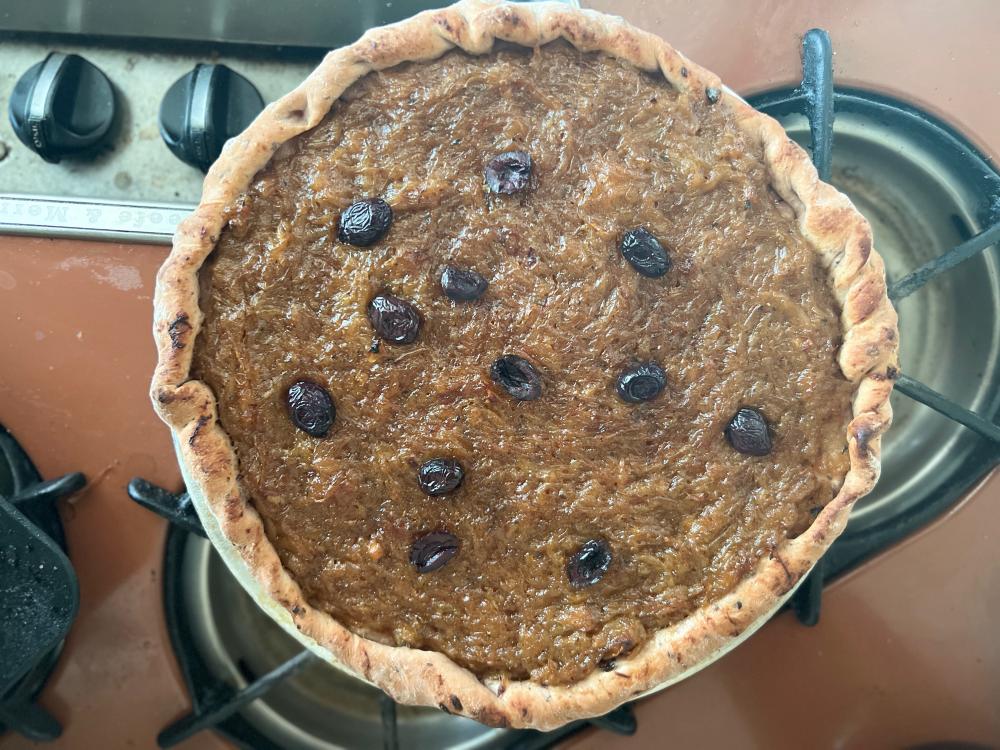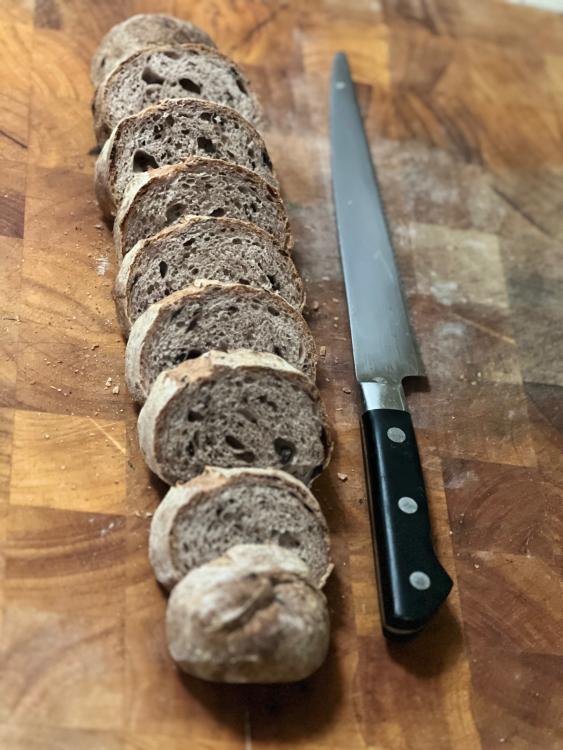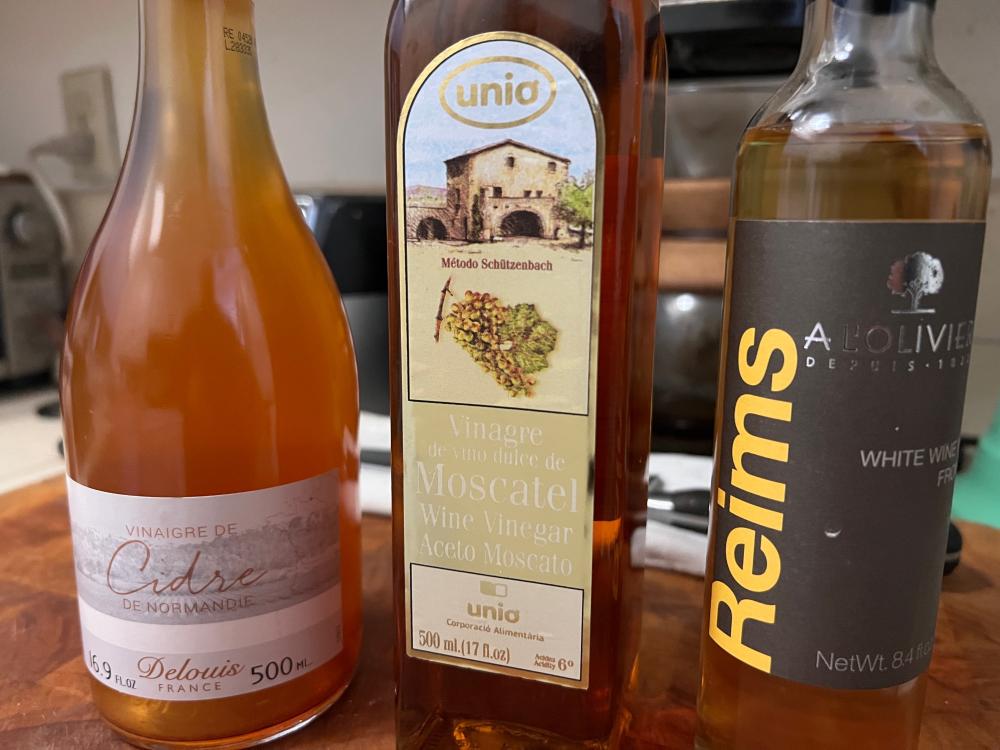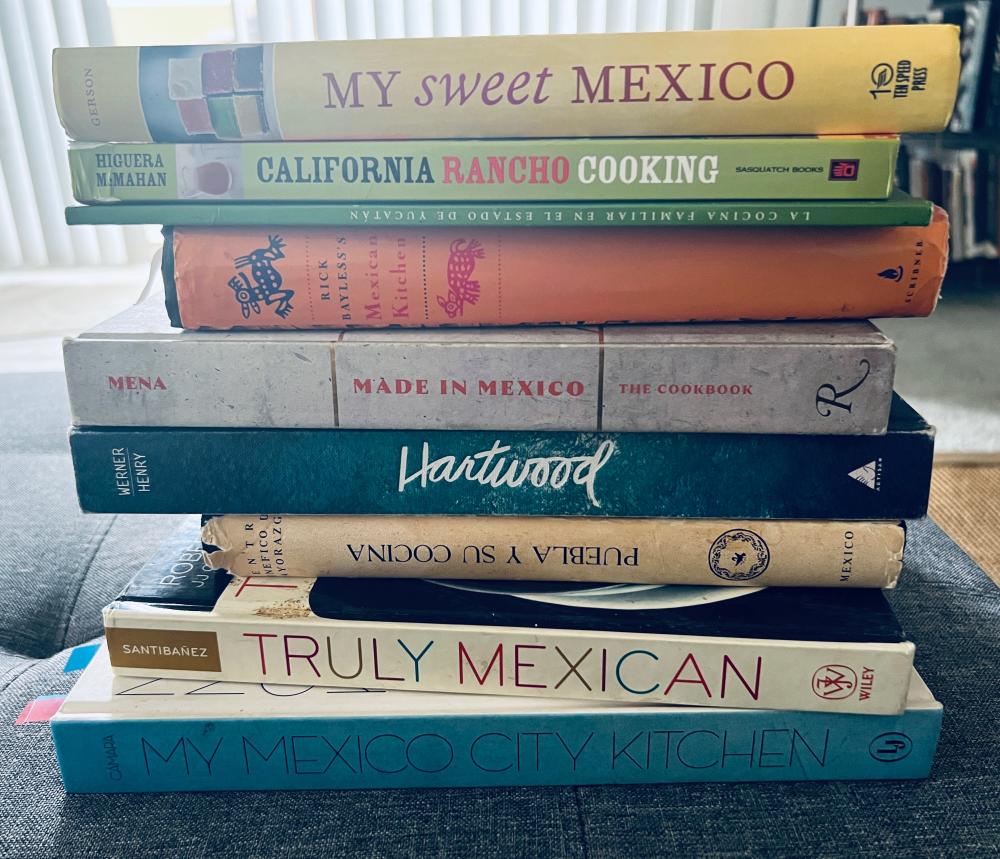
AAQuesada
-
Posts
964 -
Joined
-
Last visited
Content Type
Profiles
Forums
Store
Help Articles
Posts posted by AAQuesada
-
-
5 hours ago, ElsieD said:
Any reason why this won't work?
Beef Cheeks are great sous vide. And I not even huge fan of Sous vide generally. I would do it this way as well for Pastrami. If you do it let us know how it turns out!
-
 2
2
-
-
Nice! That's one of my favorite cuts off meat
I was just looking at this one with Beef Cheeks, another favorite cut that looks pretty sexy too.
https://thefoodist.uk/2015/05/31/beef-cheek-pastrami-recipe-redux/
-
I hope you don't mind if I add on. I used to make this American style yellow mustard when opened a Cuban restaurant, like to leave it just a lil coarse because I like that bit of texture. These days at home I've been really into Savora the French version of yellow mustard discovered it on a sandwich at FTG in Paris and have been hooked ever since.
Ingredients:
.
Amount:
.
Notes:
.
Mustard seeds
110 g
White wine vinegar
160 ml
Water
160 ml
Brown sugar
1 oz
Tumeric
2 tsp
Water
AN
1) Combine Mustard seed, water, wine vinegar and let stand over night
Key Points:
1) up to 3 days
2) Add to blender
2)
3) add sugar, tumeric
3)
4) Blend. Add water as needed if mixture is too thick.
4)
5)
5)
-
 2
2
-
-
It's so versatile and useful. Great for home cooks and restaurant chefs.
-
 1
1
-
-
On 11/17/2022 at 4:20 PM, Margaret Pilgrim said:
I asked for their recipe and was shown a sack of Krusteze.
A lot of restaurants use that brand
-
-
She really has a straight forward manner that cuts through a lot bs
-
As in not flexible. I guess what I’m trying to say is that even if you take out all of the water and clarified butter that it is still not going to act the same as a solid shortening in pastry
-
You really want to use a solid shortening if at all possible (lard, crisco, coconut oil-solid not liquid) butter being 18%ish water is a problem and with out the water butter is brittle.
-
-
Should be fine, but I would refrigerate personally
-
I was told paper towel in a glass jar with a microfiber towel or sous vide. Change the paper towel daily.
She keeps them in a kimchi fridge i believe
I've been told no rice or eggs then you get great tasting eggs but it dulls the actual truffle flavor
-
-
I am getting a small amount (One, who knows) very very high quality French Truffle (I believe) from a local importer I did a favor for coming Monday. Looking for any suggestions to make the most of it. Is there a good Primer on the topic somewhere on the inter webs? I'm thinking peel and use the peelings to infuse in water for a truffle jus, one of my books has a suggestion of poaching whole in a mushroom Madeira broth thereby getting two products out of it the whole truffle and the broth? Any other suggestions? is it worth making truffle oil from the peeling instead of the jus. Pasta or risotto or something else?
Excited but nervous about f'n it up!
-
 1
1
-
-
At least they got the class and had to think about it!
-
 2
2
-
-
Any jar purpose made for canning/preservation is fine.
Yes the lid goes on but not overly tightened
Just follow the recipe, if they don't specify adding other liquid -don't.
-
4 hours ago, Katie Meadow said:
No one has mentioned "The Taste of Mexico" by Patricia Quintana. I've had this book many years and have no memory of how or when I got it. It's lovely. A large elegant book organized by region, it has expensive paper and beautiful photography. Curous, I checked Amazon and it sells for a whopping $65. However it appears there are lots of used copies floating around at very reasonable prices on eBay, Abe's, etc., many hovering at $10 or so.
I have never seen the book but for anyone interested there were a few recipes of hers on StarChefs that I had saved to my google drive over the years (I like to save recipes for inspiration). Was going to link to them but they appear to be gone, fun stuff like a Hibiscus flower mole with lobster.-
 1
1
-
-
Lol pretty sure Villux is the correct answer for highest quality/price I'm seeing 7.49$ for 750ml. Happy to be proven wrong though!
-
Btw the Vermouth (Vermut) vinegar by Castel de Gardeny is pretty great as well. The Torres has really great varietal flavor and darker flavors than most red wine vinegars.
-
-
Vilux is what I use. I do like good vinegar and it's almost a shame to buy small bottles. Best quality for the price I've seen.
-
I'll be curious what your thoughts are when you receive it! Some recipes are definitely dated but there are a remarkable amount that sparkle with creativity still or are at least worth tweaking to modernize.
-
 1
1
-
-
31 minutes ago, TdeV said:
Sorry to be so late replying.
Could you possibly say more about the Apple Pie Duck?
I't is basically a roast duck with apple sauce to over simplify. I haven't made it and on first blush I thought 'that sounds weird' but as I looked closer the combination sounds lovely. He rubs the duck with a salt, sugar, cinnamon cure to marry the flavors of the sauce. Looks great for fall / winter I can post a picture of the whole thing if you'd like. With that picture I was mostly trying to give a flavor of his creativity
-
 1
1
-
-









Sous vide Picanha pastrami
in Cooking
Posted
You can def sous vide beef cheeks medium, I've done it. Just make sure you leave it long enough to soften up